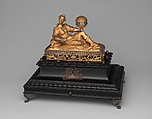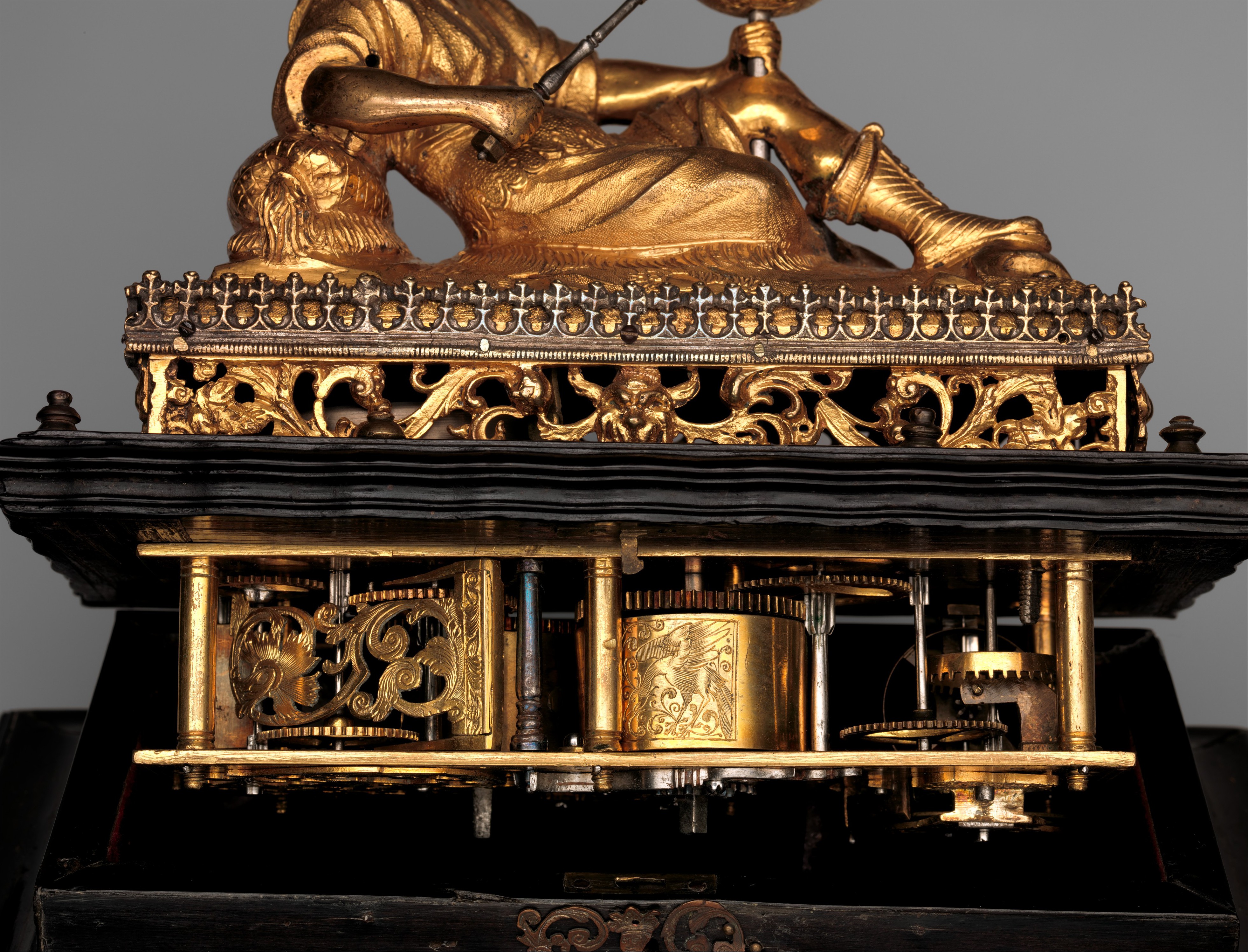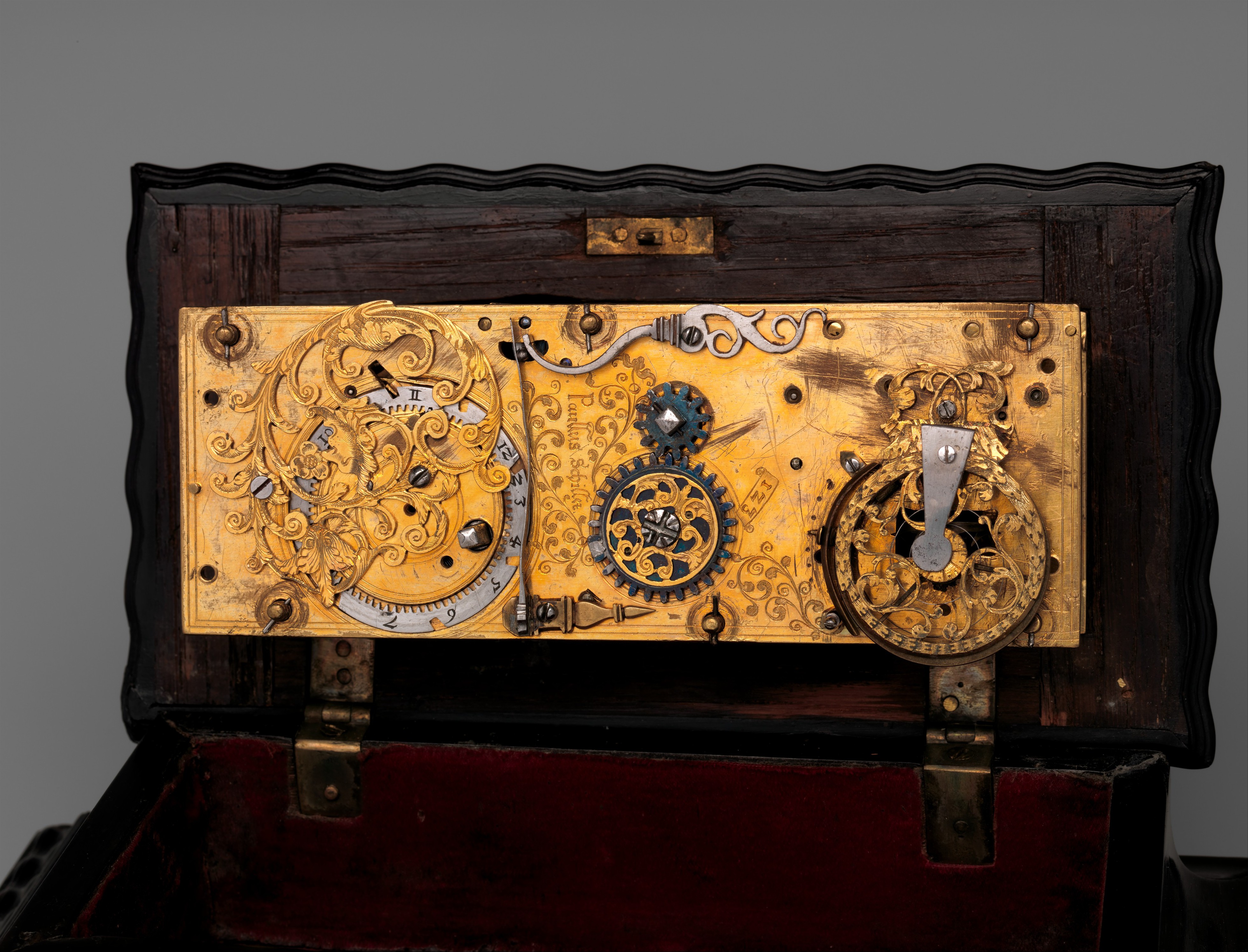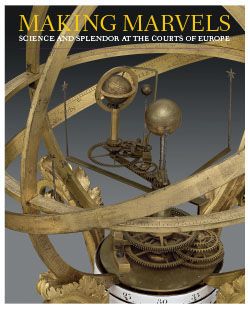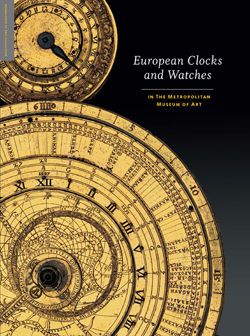Automaton clock in the form of Urania
Paullus Schiller German
An elegantly dressed Urania, muse of astrology and symbol of love, reclines atop the ebonized case, which hides a winding key in a drawer on the right side (2015.76). On the hour, she turns her head and lifts her arm to move her pointer toward a horizontal dial mounted on the circumference of a sphere.[3] The figure is not a fully mobile automaton, but small marvels like it appeared as table decorations and in the Kunstkammer. Its details and technological refinement invited viewers to inspect the object up close and to discover its secrets. It must have been a delight to lift the lid to admire Paullus Schiller’s clockwork movement, which is masterfully engraved with floral sprays and bird ornaments. Urania is an appropriate subject for an automaton made in Nuremberg. The city already had an astronomical observatory at the beginning of the sixteenth century, probably the first in northern Europe.[4] Schiller produced several very similar automata; a variation of the present object was part of the auction of the collection of Yves Saint Laurent and Pierre Bergé.[5]
In the second object (SL.2.2019.22.2a, b), the silver figure of a lion paces slowly on its eight-cornered ebony base.[6] Originally, a mechanism connected to a quarter- and hour-striking movement caused the lion’s eyes to roll, its jaw to open, and its tongue to stick out, no doubt to the enchantment of its owner. The spring clock mechanism with pendulum was added about 1675–80. This work has a very special status within the history of Augsburg clockmakers. The object com-bines the work of a master goldsmith with that of a clockmaker, as well as an experienced cabinetmaker. The guarantee mark “eben” documents not only that the wood veneer is a precious, exotic hard-wood, but also that the maker showed his work to the guild for inspection (see also cat. 119).
Each clock represents a splendid confluence of the refined craftsmanship of various Augsburg guilds, which worked together to create a repertoire of highly inventive and well-crafted objects.[7] This coordination was perfected in the sixteenth century by the art merchant and diplomat Philipp Hainhofer, and culminated in the eighteenth century with the great silver merchants of Augsburg, who supervised the production of large-scale cabinets and table services commissioned all over Europe.[8] Specialists could concentrate on their best skills and each contribute a different, highly refined part, thereby attaining a higher level of execution than the standard workshops of the period could accomplish. The influence of Renaissance North Italian or French bronze statuettes is clear, but the goldsmith or model creator found his own way to evoke a powerful silver beast or the elegantly reclining Urania.
Footnotes
(For key to shortened references see bibliography in Koeppe, Making Marvels: Science & Splendor at the Courts of Europe: The Metropolitan Museum of Art, 2019)
1. Vincent and Leopold 2015, p. 50, ill. p. 52.
2. Seling 2007, p. 40, no. 0200
(Augsburg town mark), p. 187, no. 1160a ( maker’s mark).
3. Vincent and Leopold 2015, p. 52.
4. Gaulke 2009, p. 97.
5. Christie’s 2009, no. 721. A Urania automaton mounted on a later Boulle base signed “P. Schiller Franckfort” was included in a sale at Artcurial, Paris, June 19, 2012, no. 34.
6. Maurice and Mayr 1980, pp. 254–61, nos. 82–90, illustrate several lions in a variety of postures and inventive forms. See also Maurice 1976, vol. 2, pp. 50–52, figs. 315–29.
7. Himmelheber 1980.
8. “Philipp Hainhofer” n.d.
Due to rights restrictions, this image cannot be enlarged, viewed at full screen, or downloaded.
This artwork is meant to be viewed from right to left. Scroll left to view more.
